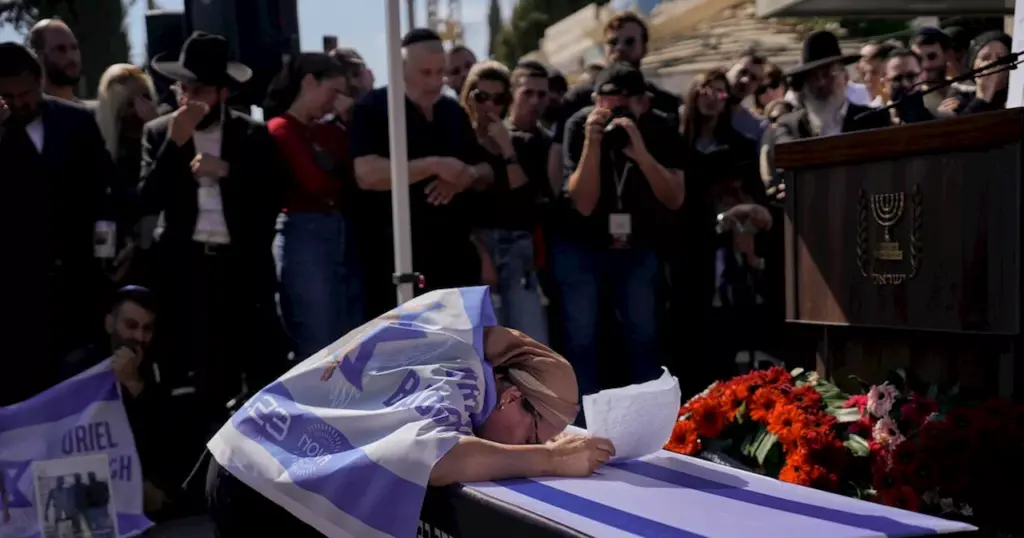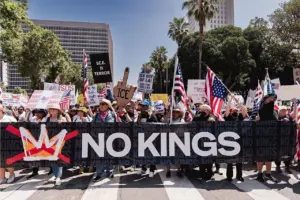
A fragile ceasefire between Israel and Hamas is under significant strain following a weekend marked by violence and conflict. The truce, which has been in place for ten days, faced its first major test after two Israeli soldiers were killed and another wounded when a missile struck their military vehicle in Rafah. The Israel Defense Forces (IDF) confirmed the incident, prompting swift retaliatory airstrikes on targets in the Gaza Strip, which Israel claimed were associated with Hamas.
In response to the missile attack, Israel launched a series of airstrikes on buildings in Gaza, citing their use as Hamas military installations. Despite these claims, Hamas denied involvement in the attack on the Israeli soldiers, asserting that the offensive was executed by rogue militants outside their control. The group’s leadership reiterated its commitment to maintaining the ceasefire, even as tensions escalated.
On October 17, 2025, President Donald Trump addressed reporters, expressing skepticism about Hamas’s involvement in the missile strike. He emphasized the need for the group to adhere to the ceasefire agreement, stating, “We have a little situation with Hamas, and that will be taken care of very quickly if they don’t straighten it out themselves, because they’re in violation of the agreement.”
These flare-ups are not isolated incidents; they underscore the fragile nature of the ceasefire, which had already been tested by previous conflicts. Since the ceasefire commenced, Hamas has attempted to assert its authority in Gaza, leading to public displays of violence and executions under the guise of restoring order.
Under the terms of the peace plan, Hamas was expected to release all remaining hostages in exchange for the release of Palestinian prisoners and a phased withdrawal of Israeli troops. However, negotiations regarding key issues—such as Hamas’s disarmament and relinquishing control of Gaza—remain unresolved and pose significant challenges for mediators.
Ariel Ahram, a Middle East specialist at Virginia Tech, noted that both sides accepted the ceasefire under conditions that may hinder its longevity. “Hamas said yes, but clearly wasn’t interested in disarming, as stipulated in Point 6 of the plan. The day after the ceasefire, Hamas fighters emerged with their weapons intact,” Ahram explained. Israel, for its part, has ruled out Palestinian statehood, opposing a critical component of the peace plan.
The United States has remained actively involved in facilitating the ceasefire. On Monday, top diplomats, including special envoy Steve Witkoff and Jared Kushner, Trump’s son-in-law, were in Israel to meet with government officials and reinforce the tenuous agreement. Vice President JD Vance and Second Lady Usha Vance are also scheduled to visit Israel to engage with Prime Minister Benjamin Netanyahu.
As international mediators convene in Egypt to discuss the implementation of the first phase of the peace deal, the timeline for formal discussions on subsequent phases remains uncertain. The U.S. has significant leverage in the negotiations, being a key provider of humanitarian and economic assistance to the region. However, Ahram highlighted that the Trump administration has been cautious in utilizing its influence until regional parties demonstrate commitment to the agreement.
“The U.S. expects that much of the money for reconstruction in Gaza will come from Saudi Arabia, the Emirates, and other Gulf states. In this respect, the inclination will be to wait for actors in the region to take the initiative,” Ahram added.
As the situation continues to evolve, the risk of further violence poses a challenge to the fragile ceasefire, with both sides needing to navigate a complex landscape of political pressures and public expectations. The coming days will be crucial in determining whether the truce can hold and pave the way for more comprehensive peace negotiations.







